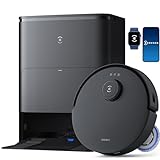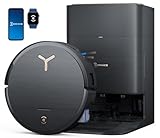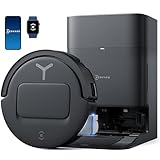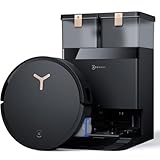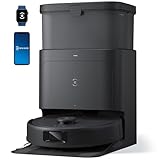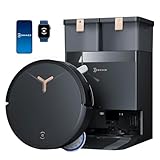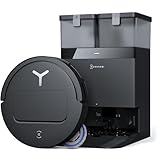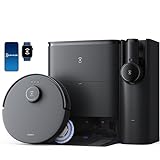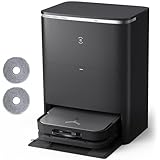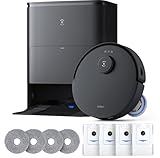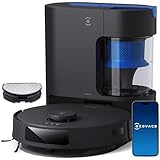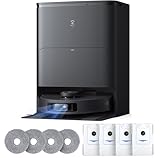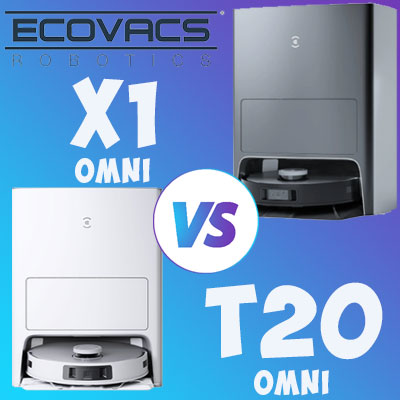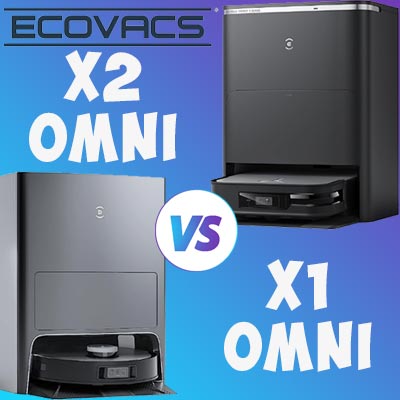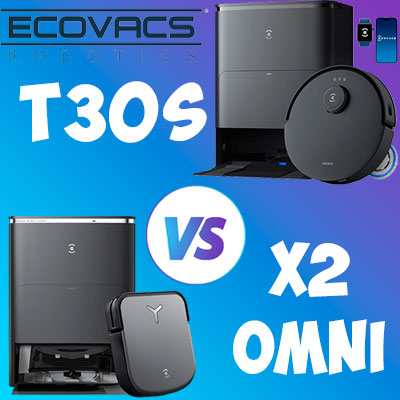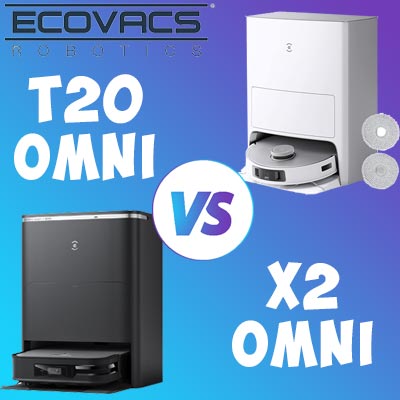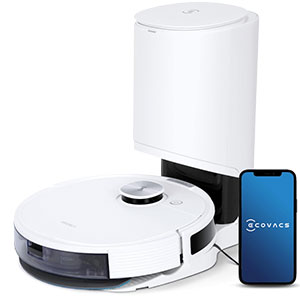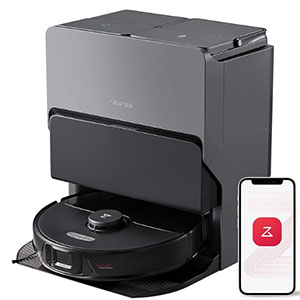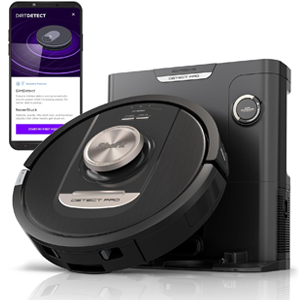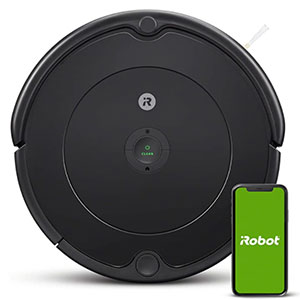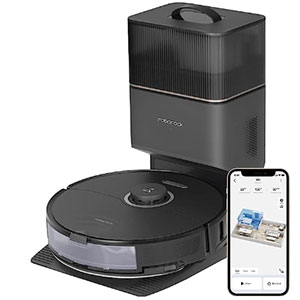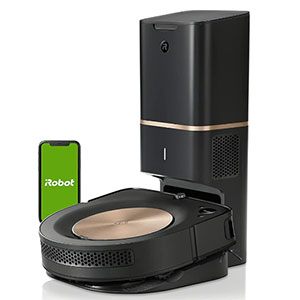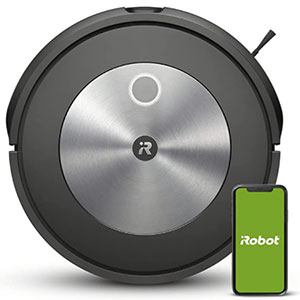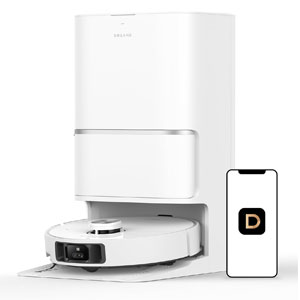Deebot N30 vs. T30 – Comparison Review
Deebot N30 Omni
Deebot T30S Combo
Deebot N30 Omni
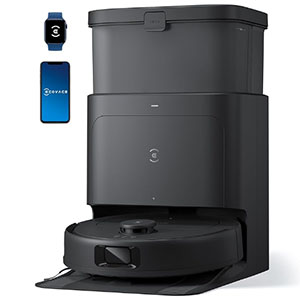

Deebot T30S Combo
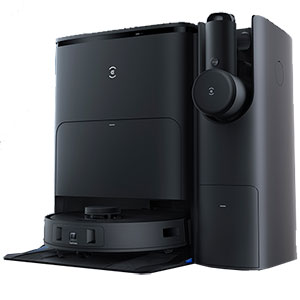
Deebot Cyber Monday 2025
Robotic Vacuum Cleaners play a significant role in everyday cleaning – modern models perfectly vacuum and mop the hard floors and carpets. With minimum care from homeowners, they can clean per a set schedule one day after another, keeping your home clean and safe from allergens. I like robots for their versatility and the possibility of reaching narrow edges and places under the furniture, but I have to admit that I once a month use a standard canister vacuum cleaner for deep cleaning.
There are hundreds of models from different brands on the market that differ in functionality and price, and it is always tricky to find the best quality and value. One of my favorite brands that has recently presented numerous robots with an all-in-one cleaning station is Deebot. The ECOVACS brand has produced Deebot cleaners for more than twenty years and has extensive experience satisfying customers with qualified products. I will compare the fresh models Deebot N30 vs. T30 to evaluate the best model in a very close price range.
Deebot N30 vs. T30 – Face-to-face comparison
Deebot N30 OMNI is a round, black robotic vacuum cleaner with an OMNI station. On the top of the robot, it has three grey buttons – to start auto and spot cleaning modes and return to the home button.
A dust bin and a water tank have a top access, using the special small lid which you need to open by pressing a button. To protect the robot from crashes and scratches, it has a protective bumper. On the bottom of the robot, there are two mopping pads, one edge brush, and one main brush.
The inlet to the dustbin is located after the brush. You can purchase this model in black and white color. The slim design of a robot allows it to reach the space under low-profile furniture.
Deebot T30S is a round robotic vacuum cleaner with an upgraded OMNI station. For control, it has three buttons – auto cleaning, spot cleaning, and home button. Moving around the floor, it uses rubber wheels located at the bottom of the main brush.
For cleaning, the robot is equipped with two mopping pads, one edge brush, and one main brush. Near the mopping pads in front of the robot, the protective bumper is located to prevent any robot damage. To access a dustbin and a water tank, I have to lift the lid, which I consider very convenient for cleaning.
Nevertheless, I don’t need to do it frequently as OMNI station performs almost full regular auto maintenance.


The dimensions of the two robots are the same; the difference is in weight and the top lid. In my opinion, the differences are not big enough to call the winner in this round.
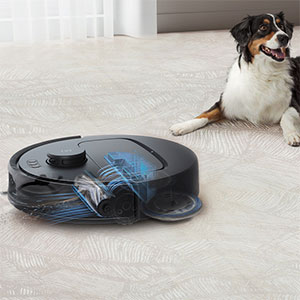
Deebot N30 has the same cleaning modes as the top expensive robotic cleaners—only vacuum and mop and simultaneous vacuum and mop. The cleaning efficiency in simultaneous vacuum and mop mode reaches 99.8%.
The OZMO Turbo 2.0 is installed on this robot, so it has a five-stage cleaning system. For cleaning edges and corners, the robot has a hovering arm on one of the mopping pads to achieve them up to 1 mm. The robot can clean automatically, manually, or in spot mode.
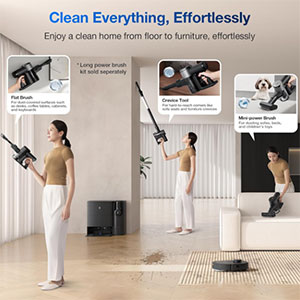
Deebot T30 has all the necessary modes for cleaning the hard floors and carpets efficiently. It cleans in separate mop and vacuum modes, simultaneous vacuum and mop mode, and first vacuum and mop mode. You can choose from the smartphone app the auto cleaning mode, spot cleaning mode, or control the robot manually.
The robot can cross barriers up to 0.79 inches with installed mopping pads. This model also has a hovering arm on one of the mopping pads to reach the corners and edges very close. It has OZMO Turbo 2.0 technology and auto refill water tank refill to dissolve and remove all stubborn stains.


The Deebot T30 has one more cleaning mode—vacuum first and then mop—and this is the only difference between the models. I consider this minor as well, as the cleaning coverage of both models and OZMO technologies are the same. So, I can’t call the winner in this part of the comparison Deebot N30 vs. T30.
The N30 mopping machine uses a 25.000 rpm high-speed motor that drives dual spinning mopping pads. The pads operate like human hands, with a constant scrubbing pressure of 7N at a rotation speed of 180 rpm for the most effective cleaning and removal of all stubborn stains. If you want to customize the mopping process, you can change the water level and set it to a specific room.
The T30 performs intelligent deep mopping of hard floors. The dual spinning mopping pads scrub with 6N downward pressure. The sensors detect dirt and automatically pass one-time light stains and two-times stubborn stains. The mopping process is customized in the smartphone app.


The N30 scrubs the floor with higher pressure, but the T30 intelligently cleans the stubborn messes. So, in this part, I consider these models to be even as well.
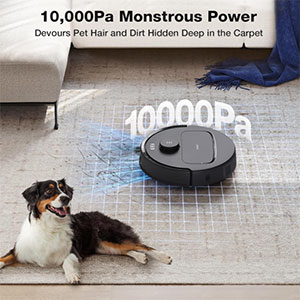
Deebot N30 has a powerful suction of 10000 Pa for deep cleaning on all surfaces, ensured by advanced motor and airflow technology. The robot has ultrasonic sensors for carpets and automatically boosts the suction to maximum from standard to deep carpet cleaning and prevents wet carpets. The mopping pads are lifted automatically on the carpets at 9 mm (0.35”).

Deebot T30 has an extreme suction power of 11000 Pa for cleaning all types of floors—one of the highest in the industry. This high power makes the cleaning process effortless and directs all debris and hair directly into the dustbin. The robot automatically detects the carpet using a sensor, lifts the mopping pads to 9 mm, and auto-boosts the suction power to the maximum.


Deebot T30 is the winner in the suction power comparison. However, honestly, I think the suction power difference is not significant and does not impact performance too much.
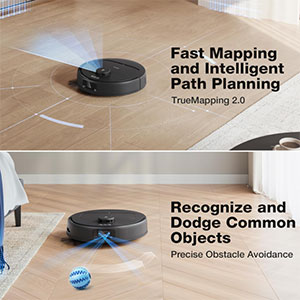
The interrupted optimized cleaning process of Deebot N30 has been performed by TrueMapping 2.0 and TrueDetect 3.0 technologies. By using multiple sensors on the robot body, including the LiDAR sensors on top, the robot detects obstacles up to 20 mm high and escapes from all traps.
At the first run, it creates the 3D maps, which are 100 sq m in 6 minutes. It supports multiple floor maps, and all maps can be adjusted and corrected to set no-go zones and virtual boundaries in the smartphone app.

The T30S precisely builds home maps for multiple floors using TrueMapping 2.0 and TrueDetect 3D 3.0, which allows users to avoid obstacles and clean around furniture. During the first run, 100 sq. m. were mapped in six minutes.
All maps are built in 3D for better usage and setting boundaries and no-go zones in the smartphone app. I like how the maps look in the app; with friendly navigation, I can easily set schedules in the required rooms.


There is no difference between Deebot N30 and T30 in navigation and mapping. At this point, and as at others before, I do not announce the winner.
Deebot N30 has a washable high-efficiency filter that should be cleaned once in 150 days.
Deebot T30 has a HEPA washable filter that captures dust up to 0.3 micrometers in size.


Both vacuum cleaners, N30 and T30, have dustbins equipped with high-efficiency filters. I have to repeat that there is no winner.

Deebot N30 is equipped with a floating main ZeroTangle 2.0 brush. It has a blue rubber V-shaped spiral core with V-shaped white anti-tangle plastic bristles and long rubber black rubber plates.
This triple-structured brush effortlessly lifts and directs all types of debris into a dustbin, preventing hair tangling. The V-shaped comb tech array on the dustbin inlet also helps to direct the debris. Using one edge plastic brush, the robot reaches all corners with a maximum coverage of up to 99%.
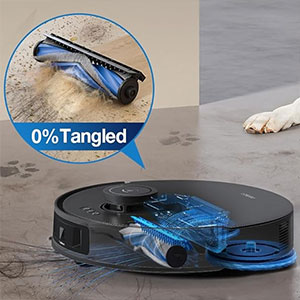
Deebot T30 has two brushes for picking up and directing dirt and debris into a dustbin. The main brush has a blue V-shaped rubber core with an antistatic finish to catch hair and grey plastic bristles to pick up hair.
The dual comb teeth in the brush house detangle hair and ensure zero tangling. The edge brush located on one side has black plastic bristles that are three rays in length.


Even though T30 and N30 have both two brushes, the main brush of the N30 model has additional rubber plates for better debris picking up. I consider N30 the winner in this regard.
The N30 model has a plastic dustbin with a washable removable filter and a plastic water tank for manual refill. The dustbin is accessed from the top.
The T30 model is equipped with a cartridge filter and a water tank. After removing the lid, both tanks are accessible from the top. The water tank is auto-refilled.


The possibility of automatic water tank refills and increased capacity of a water tank and a dustbin persuade me to say again that T30 is the leader in this part.
Deebot N30 has a Li-ion battery for cleaning up to 5200 m2 of the floor in silent vacuum mode for 320 minutes on a single charge. The battery is charged automatically when the minimum level is reached to ensure the unfinished cleaning tasks are completed. The battery is charged only during standard time but ensures up to 320 minutes of working time in silent or vacuum-only mode.
The Deebot T30 has the same Li-ion battery, which is charged for 3 hours using the fast charging station of the OMNI station. This robot can work up to 200 minutes on a single charge in simultaneous vacuum and mop mode and up to 290 minutes in silent or vacuum-only mode. The robot automatically recharges and resumes at the same spot.


The capacity of both cleaner’s batteries is the same, but the benefit of N30 is that it ensures longer run time, while the benefit of T30 is fast charging. Again, it isn't very easy for me to define a winner.
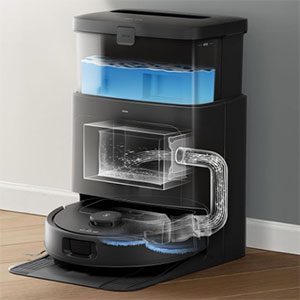
The N30 docking station (OMNI station) has many features that allow for hands-free maintenance in weeks. It cleans mopping pads with water and dries them with hot air (104 F); they are always cleaned after each cycle without manual intervention.
When the robot arrives at the docking station, it is emptied automatically, and the dust can be stored in a 2.6 L dust bag for up to 75 days. The mopping pads are automatically washed using clean water from a clean water tank; the dirty water is collected in a dirty water tank. You can start the docking station self-cleaning by pressing the button on the docking station.
Even though it does not automatically refill the water tank in the robot, it has an additional feature – it adds the solid floor cleaner for deep cleaning of a base station for 30 days (the cleaner is sold separately). For better cleaning, the base plate is detachable.
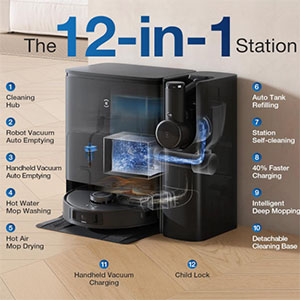
The T30 docking station is a multifunctional upgraded charging station for easy, hands-free cleaning.
It charges the robot 40% faster than other robots, automatically empties the dust bin into a 3 L dust bag and stores it for up to 90 days, washes with hot water 158 F the mopping pads, dries the pads with hot air, refills the water tank with clean water, and performs self-cleaning of a station with one button.
To prevent accidental start, the station has a child lock button, and to clean it fully, the base plate is detachable. The station is not designed to auto-add any solvent and cleaners to the clean water tank.


I like the functionality of the T30 OMNI station more, as it refills the water tank and cleans the washing pads with hot water. In this round, I call T30 the winner.
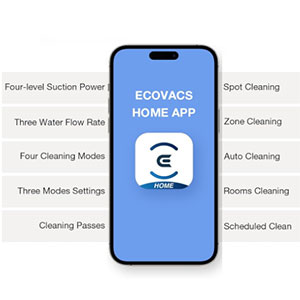
The N30 model is a smart robotic cleaner that has numerous customizable features that can be set in the ECOVACS Home smartphone app. To start and stop the cleaning, you can also use voice assistants and an Apple Watch.
ECOVACS designs its voice assistant, YIKO, which was built into the last robots. In the app, you can set schedules, set boundaries, adjust suction and water levels, choose cleaning modes, check cleaning status, and many more.
Apple Watch, widgets, and dynamic islands can be used to check cleaning status.
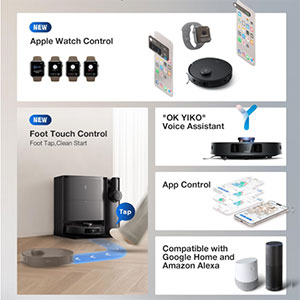
The T30 robotic vacuum cleaner can be started for auto mode or spot cleaning and moved to the docking station from buttons on the top lid.
For remote control, you can use voice assistants, including your own voice program, Yiko 2.0, and an Apple watch. Moreover, for detailed control, setting schedules and customized modes, checking status, setting the no-go zone, and other functions, you can use the Home smartphone app.
You can purchase one of the versions of the T30S model – T30S AI for more smart features. It adds a real-time call and an AI instant mop. Also, you can start this model with a gentle touch of the robot’s bumper standing on the docking station.


Both vacuum cleaners have the same smart features—voice assistants, Apple Watch, and smartphone apps. But the T30 can be started by tapping the bumper gently, which is a benefit of this model. I want to call the T30 the winner in this round.
Deebot N30 comes with:
- Robot Vacuum
- Docking station
- 2 Mopping pads
- Power cord
- 1 side brush
- 1 Cleaning brush
- 1 Multi-functional tool
- User manual
- Quick Guide
Deebot T30 comes with:
- Robot Vacuum
- Docking station
- 2 Mopping pads
- Power cord
- 1 side brush
- 1 Cleaning brush
- 1 Multi-functional tool
- User manual
- Quick Guide


The packages of two robotic vacuum cleaners contain the same quantity of parts. There is no winner.
Maintenance and setting up
The setting up of the robots T30 and N30 is simple. It requires setting up the station near the wall or furniture, removing all transportation materials, and charging the robot before the first run. You need to fill the Clean Water Tank before starting the robot. During the first run, the robots will make the maps of the home. After that, they are ready to clean the floor. All recommendations for regular maintenance I summarize in the table:
Cleaning tests
Performance on Bare Floors (simultaneous vacuum and mop)
I conducted cleaning tests of both robotic vacuum cleaners in identical conditions to receive fair results and show real performance on bare floors and carpets.
Performance on Bare Floors (simultaneous vacuum and mop)
- Soda
- 97
- 96
- Wet paw marks
- 94
- 94
- Urine stains
- 94
- 93
- Margarine marks
- 93
- 95
- Cooking oil
- 93
- 94
- Dried porridge spots
- 94
- 93
- Honey spots
- 95
- 95
- Flour
- 99
- 99
- Rice
- 99
- 99
- Sugar
- 98
- 99
- Kitty litter
- 98
- 98
- Cherrios
- 98
- 98
- Saw dust
- 98
- 97
- Sand pebbles
- 97
- 98
Performance on Carpets
Performance on Carpets
- Pet hair
- 97
- 98
- Flour
- 98
- 98
- Rice
- 97
- 98
- Sugar
- 97
- 96
- Kitty litter
- 95
- 97
- Cherrios
- 96
- 98
- Saw dust
- 98
- 99
- Sand pebbles
- 96
- 97
Which Robot Vacuum Cleaner is Better: Deebot N30 or T30?
To tell the truth, I can’t define in this comparison Deebot N30 vs. T30 as the winner. I like both models for their functionality and performance. In the performance test, they showed close results, and the suction power was near as well. The difference between them is the more functional docking station of T30 with auto-refill and charging station and the ability to add solid cleaner to N30. Both models cover 99% of the floor surface and have similar cleaning orientations. Deebot T30 is slightly smarter with an additional starting feature, but I can’t say that it is enough to call the leader in this comparison. I recommend both models, but you need to choose based on your control and maintenance preferences.



